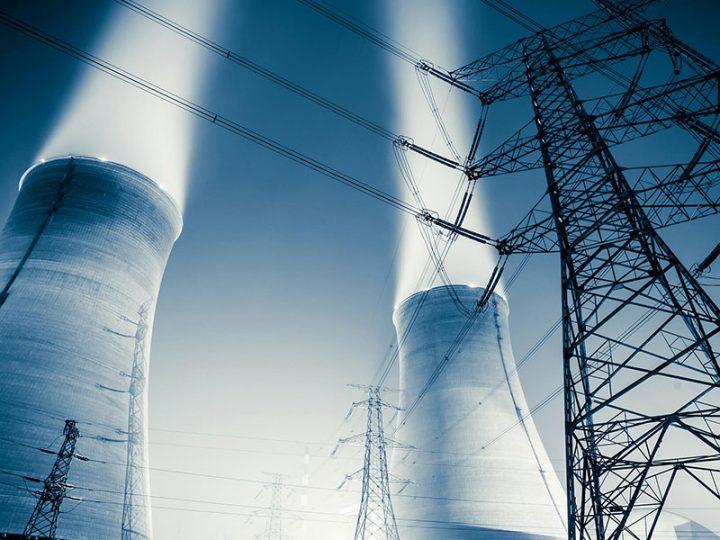What crucial trends are driving the industry?
There are a number of trends that are currently driving the industry right now. Innovation is drawing on a range of technologies, rather than any single breakthrough with the oil and gas industry, which is at an all-time high and global demand is steadily increasing. There are key elements that the upstream industry should reflect on. New and vintage methods continue to pave the industry’s practices of finding resources that our economy largely depends on.
Seismic imaging is at the forefront of unlocking hidden gems, continued technology that changes the way we do business is seismic imaging. This form of technology isn’t new to the industry, it’s been used for about 80 years; however, ongoing technological developments have made geologists’ efforts to find oil and gas beneath the surface more precise and effective as it treads into deeper waters and remote areas.
These days, enhanced oil recovery, or EOR, is a widely used technique for increasing the amount of crude oil extracted from an oil field.
A variety of technologies look to have a high impact in the coming years relating to extending the life of existing assets –enhanced oil and gas recovery (EOR)
Near-term impact – automation -remote and subsea operation as firms seek to cope with challenging environments. High-pressure, high-temperature (HPHT) drilling and multi-stage fracking are also expected to have a major impact, but are expected to be fully deployed in a few years time.
Continued risk aversion in the sector, especially in the deployment of new technologies is, however, a major brake on innovation. Joint ventures with external partners are set to become more common.
What market segments will experience the most growth and why?
High energy prices will trigger an even more earnest rethinking of how clean energy and energy efficiency can improve the bottom line through the next few years and the coming decade. Also, there will be a trend by companies to make concrete moves to improve energy efficiency and pursue clean energy technology. Renewable energy may not be a significant aspect now, but in future we should see a particularly significant increase in companies generating their own energy.
But corporate concerns about oil price volatility are likely to see not only a shift to renewables, but a shift to natural gas, which is cheaper and cleaner. If natural gas prices remain significantly cheaper than oil over the coming several years, we should see more companies announce a switch to natural gas for transportation needs.
Also, there will be increased attention on new frontiers. Neither major nor junior explorers can resist the offerings of Africa, with major oil discoveries in Kenya which are taking the first steps towards commercial viability, to world-class gas discoveries in Tanzania and Mozambique.
But it won’t end here, small and intermediate companies are pushing the envelope further, banking on Kenya’s finds extending into Ethiopia.
Also, we might expect some renewed interest in Eritrea in the coming years, and its Red Sea territory could have some of the biggest finds yet, though exploration hasn’t even begun and the government has only recently sought to capitalize on this potential.
War-torn Somalia is also set to become a new exploration venue. Even Somaliland, which is not even recognized internationally, is becoming an exploration venue despite the obvious challenges of exploring in a non-existent country.
A lot of money is being invested into LNG (Liquefied Natural Gas) technology right now, and this is where the trends are:
- LNG demand is set to double over the next decade to 408 million tons a year.
- Major markets for LNG are opening up and some of them can’t be reached by overland pipelines.
- The Asian market is particularly hot for LNG.
- Prices and rising global demand make it worth it to ship LNG by seaborne tankers.
- The US may become a major LNG exporter, and customers are already lining up.
- Russia is now in the global LNG market and it’s determined to become a major player in this field.
- Britain’s natural gas imports from outside the North Sea will surpass domestic production by 2015 and add more than $11 billion to import costs as domestic supplies dwindle and Norway struggles to fill the gap (Qatar is only sending it leftovers right now—the bulk goes to higher paying Asian customers).
- The natural gas industry will continue to shift away from overland pipeline deliveries to seaborne tankers to supply distant markets.
- Floating LNG production, storage and offloading concepts are revolutionary because they have the ability to station a vessel directly over distant fields, removing the need for offshore pipelines and adding the advantage of mobility—these floating facilities can be moved to a new location once existing fields are depleted.
What are the key challenges?
The Oil & Gas sector is like no other industry today, there is a high demand for oil and gas resources. Due to recent oil prices, competition for natural resources has driven companies to explore further in harsher, more remote and sometimes hostile locations where even the simplest of logistical tasks can be difficult and costly.
Companies are now driven to drill deeper and with that drive comes higher costs. And, as the environment grows more diverse and unforgiving and the challenges become more complex, skilled human resources are aging and growing scarce. For example experienced Materials specialists are getting older and retiring, this is also occurring in other niche fields.
Intelligent surveillance, i.e. utilizing downhole sensors to monitor wells, is key to moving the industry forward. But to be effective, new processes, roles and responsibilities must be determined, and personnel must be trained. Today, many field workers operate independently in remote oil and gas fields. Centralized monitoring of wells will require oversight and procedural changes that may be difficult to institute.
Gathering and analyzing data quickly and effectively in a controlled laboratory environment can be difficult; in an environment such as the North Sea this can be a monumental task. And while new technologies, such as 3D printing, have shown the promise of great things to come, integrating this innovative technology with existing systems, new tools can be arduous. Much of the potentially useful data captured today is not typically stored, nor is it distributed to the people who can use it the most. Complex production problems — such as sanding, where in solids, sand in particular, intrude and plug wells and adversely affect production — require an understanding of the issues and the tools to critically analyze data and determine historical patterns. In the end, turning this data into useful, relevant information that will help make business-critical decisions is one of the main challenges the industry faces today.




